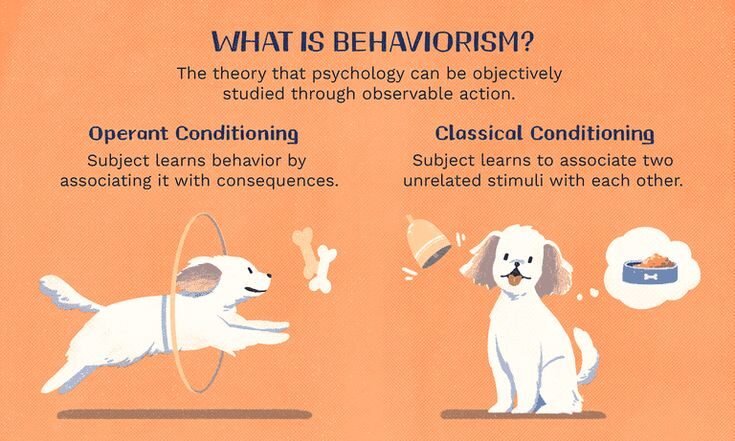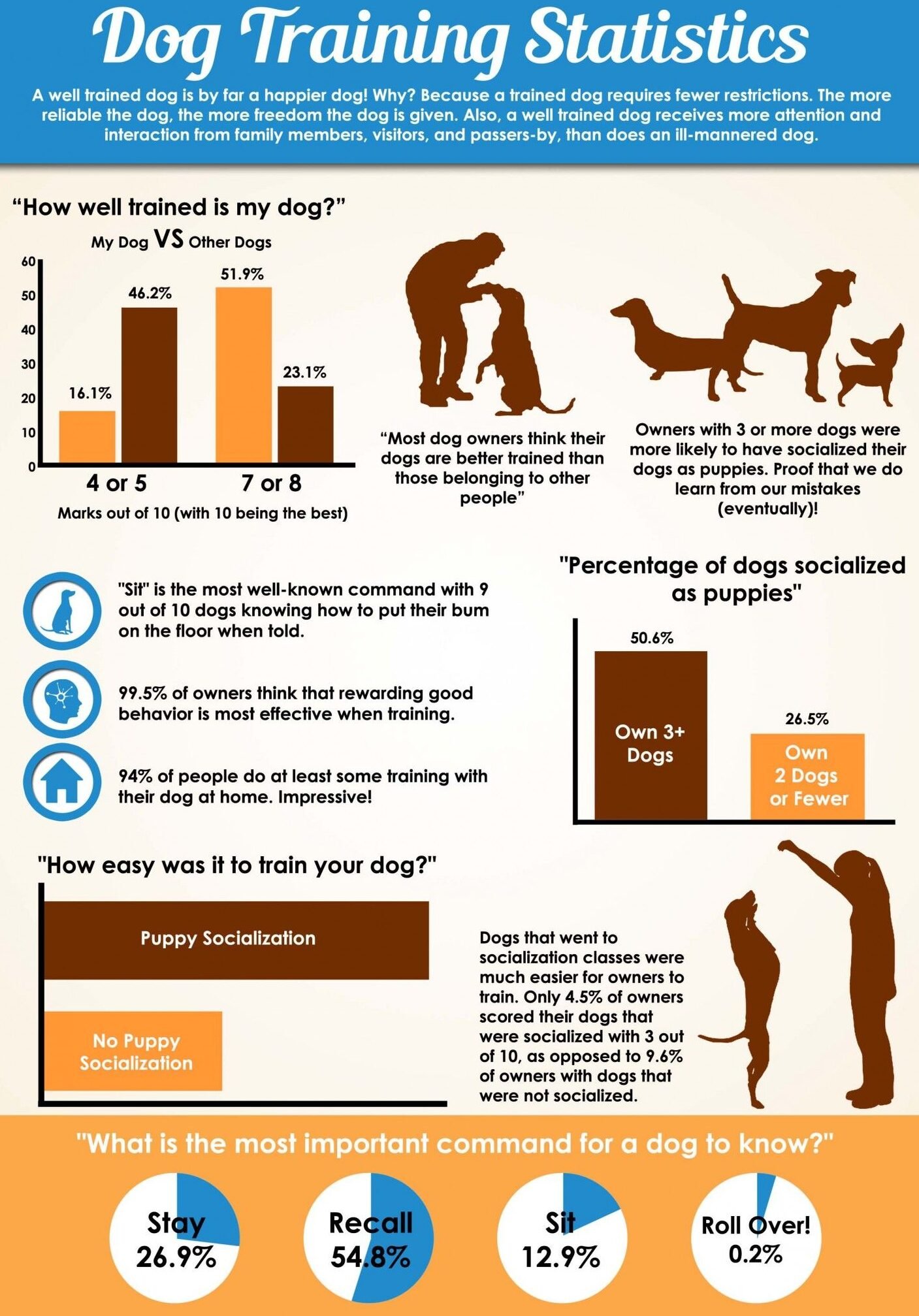MEDIUM BREEDS
Australian Shepherd: Everything You Need to Know

The Australian Shepherd, affectionately known as the “Aussie,” is a versatile, intelligent, and energetic breed best known for its herding skills and outgoing personality. Despite its name, this breed actually originated in the United States. Whether you’re considering adopting an Australian Shepherd or are curious about this fascinating breed, this article covers all the essentials, including its history, personality traits, care requirements, and suitability as a pet.
For more information regarding 4 seasonal cxcercieses of all dog breeds recommended by the doctors and experts,you can visit our youtube channel:
https://www.youtube.com/@Dogsreaders

A Brief History of the Australian Shepherd
Contrary to what its name suggests, the Australian Shepherd was not developed in Australia. While it’s true that some of its ancestors were likely imported from Australia, the breed as we know it today was refined in the United States in the 19th century. Ranchers in the western states bred these dogs for their exceptional herding skills, stamina, and trainability.

Legend has it that the breed received its name because of its association with Basque shepherds who traveled to America from Australia, bringing their herding dogs along. Whatever its origin, the Australian Shepherd quickly gained recognition for excelling in farm and ranch work, rodeos, and even search-and-rescue missions.

Personality and Temperament
Australian Shepherds are often described as “workaholics” of the dog world, and for good reason. They are highly energetic, intelligent, and task-focused, making them ideal for active families and individuals. Aussies are extremely loyal and form strong bonds with their owners.

Key Personality Traits:
- Energetic and Playful: These dogs require plenty of physical and mental stimulation. They thrive in environments where they can run, play, and engage in activities that challenge their sharp minds.
- Intelligent: Ranked one of the smartest dog breeds, Aussies can learn complex tasks and commands with ease.
- Protective: They are naturally protective and make excellent watchdogs without being overly aggressive.
- Sociable: Although they may be reserved with strangers at first, Aussies are social dogs who enjoy spending time with their families.

Physical Characteristics
Australian Shepherds are medium-sized dogs with a striking appearance, thanks to their unique coat colors and captivating eyes.
Size:
- Male Aussies typically weigh between 50–65 pounds and stand 20–23 inches tall.
- Females are slightly smaller, weighing 40–55 pounds, with a height of 18–21 inches.
Coat and Colors:
The Aussie’s coat is weather-resistant, medium-length, and can come in various colors, including blue merle, red merle, black, and red. Some Aussies have white or tan markings, creating stunning patterns.

Eyes:
One of the Australian Shepherd’s most enchanting features is its eyes, which can be blue, brown, amber, or even have two different colors (a condition known as heterochromia).

Care and Maintenance
Owning an Australian Shepherd comes with responsibilities that match its high-energy personality. Here’s what you need to know about caring for this breed.
Exercise Requirements
Australian Shepherds are incredibly active. They require at least 1–2 hours of vigorous exercise daily to stay healthy and happy. Activities such as running, hiking, agility training, and frisbee are perfect for keeping them physically and mentally stimulated. Without sufficient exercise, they can develop behavioral issues like excessive barking or destructive chewing.

Grooming Needs
While their double coat is beautiful, it requires regular maintenance.
- Brushing: Brush their coat 2–3 times a week to reduce shedding and prevent matting.
- Bathing: Give them a bath as needed—typically every 4–6 weeks.
- Nail Trimming and Ear Cleaning: Keep their nails trimmed and check their ears regularly for signs of infection or debris.
Nutrition
Australian Shepherds are high-energy dogs, so they need a well-balanced diet rich in protein and healthy fats. A high-quality commercial dog food that meets their age, size, and activity level requirements will usually suffice. Speak with your vet to determine the best diet plan for your Aussie.

Health Considerations
Australian Shepherds are generally healthy, but like all breeds, they can be prone to specific health conditions.
Some common concerns include:
- Hip Dysplasia: A genetic condition affecting mobility.
- Progressive Retinal Atrophy (PRA): This degenerative eye disease could eventually lead to blindness.
- Epilepsy: Some Aussies are prone to seizures.
- Hearing Issues: Particularly in merle-coated dogs, deafness can occur.
Regular vet visits, a balanced diet, and an active lifestyle can help ensure your Aussie stays healthy.

Australian Shepherd Common Health Issues and Veterinary Resources
While Australian Shepherds are generally healthy dogs, they can be prone to specific health conditions. It’s important to be aware of these issues and take proactive steps to ensure the well-being of your furry friend. Here are some common health concerns in Australian Shepherds:
- Hip Dysplasia: A genetic condition affecting mobility. Regular exercise, maintaining a healthy weight, and appropriate veterinary care can help manage this condition.
- Progressive Retinal Atrophy (PRA): This degenerative eye disease could eventually lead to blindness. Regular eye examinations by a veterinary ophthalmologist can help with early detection and possible interventions.
- Epilepsy: Some Australian Shepherds are prone to seizures. Consult with your veterinarian for proper diagnosis, treatment, and management.
- Hearing Issues: Particularly in merle-coated dogs, deafness can occur. Regular veterinary check-ups can help identify hearing issues early on.
It’s crucial to prioritize your Australian Shepherd’s health by scheduling regular vet visits, providing a balanced diet, and promoting an active lifestyle. These measures can help ensure your beloved Aussie stays healthy and happy.

For more information on Australian Shepherd health and to find veterinary resources, please visit the following websites:
- [American Kennel Club (AKC) – Australian Shepherd Health](https://www.akc.org/dog-breeds/australian-shepherd/health/)
- Australian Shepherd Health & Genetics Institute
Are Australian Shepherds Right for You?
Australian Shepherds make fantastic pets—but they’re not for everyone. They do best in homes, where they can be given plenty of attention, exercise, and mental challenges.
Who They’re Best For
- Active Families: If you love hiking, jogging, or other outdoor activities, an Aussie will be the perfect companion.
- Dog Lovers with Time to Train: Their intelligence makes them easy to train, but also means they need consistent interaction and engagement.
- Those with Space: While Aussies can adapt to apartment life with enough exercise, they thrive in homes with large yards or open spaces.

Who They May Not Suit
- Sedentary Owners: If you’re looking for a low-energy dog, this breed might not be the best fit.
- Busy Professionals: Aussies can suffer from separation anxiety if left alone too often or for prolonged periods.
Fun Facts About Australian Shepherds
- They’re Rodeo Stars: Aussies gained popularity for their impressive tricks and athletic abilities during rodeo events.
- Hollywood Celebrities: They’ve appeared in various films and TV shows, thanks to their intelligence and trainability.
- Tail Variability: Some Aussies are born with naturally short tails, while others have full-length tails.

Recommended Books for Australian Shepherd Owners
Here are a few recommended books to help you become a knowledgeable and responsible Australian Shepherd owner:
- “The Australian Shepherd: A Comprehensive Guide to Owning and Caring for Your Dog” by Christina Cox
- “Australian Shepherds: Everything About Purchase, Care, Nutrition, Behavior, and Training” by Joe Stahlkuppe
- “The Complete Australian Shepherd Handbook: The Essential Guide for New & Prospective Australian Shepherd Owners” by Linda Whitwam
These books provide valuable insights into the breed’s history, training techniques, health care, and overall well-being. They serve as essential resources to help you understand and meet the unique needs of your Australian Shepherd companion. Happy reading, and enjoy your journey with your Aussie!

Staying Informed: The Latest Research
To ensure you’re equipped with the most up-to-date information on Australian Shepherds and their care, it’s essential to stay informed about the latest research and evidence. As with any field, scientific understanding and best practices can evolve over time.
Stay connected with reputable sources, such as breed-specific organizations, veterinary publications, and online communities dedicated to Australian Shepherds. By staying abreast of the latest research and evidence, you can continue to provide the best care and support for your furry friend, keeping them happy, healthy, and thriving throughout their lives.

FAQs
Q: Are Australian Shepherds good with children?
A: Yes, Australian Shepherds are generally known to be good with children. They are loyal, protective, and can make great family companions. However, as with any dog, it’s important to supervise interactions between dogs and children to ensure safety and teach children how to properly interact with pets.
Q: Do Australian Shepherds require a lot of exercise?
A: Yes, Australian Shepherds are an active and energetic breed that requires regular exercise and mental stimulation. Daily walks, playtime, and engaging activities such as agility training or obedience classes are important to keep them physically and mentally stimulated.
Q: Are Australian Shepherds easy to train?

A: Australian Shepherds are highly intelligent and eager to please, which generally makes them relatively easy to train. Consistency, positive reinforcement, and early socialization and training are key to ensuring their obedience and good behavior.
Q: Do Australian Shepherds shed a lot?
A: Yes, Australian Shepherds are moderate to heavy shedders. They have a thick double coat that requires regular brushing to help manage shedding. They typically shed more during seasonal changes, and additional grooming may be needed during these times.
Q: Are Australian Shepherds suitable for apartment living?
A: Australian Shepherds are an active and energetic breed that thrives in environments with ample space to run and play. While they can adapt to apartment living with proper exercise and mental stimulation, they are happiest in homes with access to a securely fenced yard where they can burn off their energy.

Remember, each Australian Shepherd is unique, and individual personalities and needs may vary. It’s important to consider your lifestyle, commitments, and the specific needs of the breed before bringing an Australian Shepherd into your home.
Australian Shepherd: Pros and Cons
Pros:
- Intelligence: Australian Shepherds are smart and easy to train.
- Versatility: They thrive in sports like agility, obedience, and herding, offering fun and bonding with owners.
- Loyalty: Australian Shepherds are loyal, protective, and deeply bonded to their families.
- Energetic: They are a high-energy breed, which means they thrive in active households and make great companions for outdoor adventures and exercise.

- Good with Children: Australian Shepherds are generally good with children, often exhibiting patience and a gentle demeanor.
Cons:
- High Exercise Needs: Australian Shepherds need regular exercise and mental stimulation to prevent boredom and destructive behavior.
- Herding Instinct: Australian Shepherds often herd people, pets, or cars, requiring proper management.
- Grooming Requirements: Their double coat needs regular brushing to avoid matting and shedding.
- Potential for Separation Anxiety: Australian Shepherds are deeply attached to their owners and need constant companionship to avoid separation anxiety.

Final Verdict
The Australian Shepherd is a loyal, intelligent, and versatile breed that has rightfully earned its place as one of the most beloved dogs in the world. Whether you’re looking for a work companion or a playful family pet, the Aussie has plenty to offer—as long as you can keep up with its boundless energy and thirst for activity!
If you’re ready to welcome an Australian Shepherd into your life, make sure you’re prepared to provide the exercise, training, and care they deserve. You’ll be rewarded with a loving, devoted companion who will stick by your side through thick and thin.

MEDIUM BREEDS
Dog Canine Mental Fatigue: The Hidden Cause of Behavioral Issues

Understand The Topic

Dog Canine Mental Fatigue: Many dog owners believe that a tired dog is a well-behaved dog. While physical exercise is crucial, mental stimulation plays an equally important role in a dog’s overall well-being. Canine mental fatigue is a hidden issue that often leads to behavioral problems, anxiety, and even long-term health risks. Understanding and addressing this issue can significantly improve your dog’s quality of life.
For more information regarding 4 seasonal cxcercieses of all dog breeds recommended by the doctors and experts,you can visit our youtube channel:
What Is Canine Mental Fatigue?

Mental fatigue in dogs occurs when their brains are overworked, either from excessive stimulation or a lack of proper cognitive engagement. Just like humans, dogs need a balance between mental activity and rest. When this balance is disturbed, they can become stressed, irritable, and even depressed.
Signs of Mental Fatigue in Dogs
- Increased irritability or aggression
- Lack of interest in playtime or training
- Difficulty focusing or following commands
- Frequent yawning, licking, or stress signals
- Excessive sleeping or sudden hyperactivity
- Avoidance of interaction with owners or other pets
Causes of Mental Fatigue in Dogs

1. Overtraining Without Breaks
- Training is essential, but excessive or repetitive training sessions without breaks can exhaust a dog mentally. Their brain needs downtime to process and retain information.
2. Lack of Mental Stimulation
- Many dogs do not receive enough cognitive engagement, leading to boredom and frustration. Simple physical exercise is not enough; dogs need mental challenges to stay sharp.
3. Sensory Overload
- Loud noises, crowded environments, and excessive human interaction can cause stress. Certain dog breeds are more sensitive to sensory overload and require quiet spaces for relaxation.
4. Too Many Commands in One Session

- Constantly introducing new tricks without giving a dog time to master previous ones can overwhelm them, leading to frustration and mental exhaustion.
5. Lack of Proper Sleep Schedule

- Dogs require 12-14 hours of sleep per day (puppies and older dogs may need even more). Irregular sleep patterns or disturbances can contribute to mental fatigue.
How to Prevent and Reduce Canine Mental Fatigue

1. Implement a Balanced Routine
- Mix physical exercise, mental stimulation, and rest periods to ensure your dog is not overworked or bored.
2. Provide Puzzle Toys and Interactive Games
- Invest in treat-dispensing puzzles, snuffle mats, and interactive toys that encourage problem-solving skills. These activities keep your dog engaged and mentally sharp.
3. Allow Free Exploration
- Taking a dog on a walk is not just about exercise—it’s an opportunity for them to use their senses. Allow them to sniff and explore their surroundings to engage their minds.
4. Keep Training Sessions Short and Reward-Based
- Limit training to 5–10 minutes per session and use positive reinforcement. Overloading a dog with new tricks can lead to frustration and fatigue.
5. Create a Quiet Resting Space
- Ensure your dog has a designated, quiet area in the home where they can relax and recover from stimulation.
6. Monitor and Adjust Their Social Interactions
- Not all dogs enjoy the same level of social interaction. Some may need more playtime, while others require calm and solitude to recharge. Pay attention to your dog’s individual needs.
7. Establish a Consistent Sleep Schedule
- Make sure your dog has a consistent bedtime routine and a comfortable sleeping environment to promote deep, restorative sleep.
Closing Statement

Mental fatigue is an often-overlooked issue that affects a dog’s behavior, mood, and overall health. Recognizing the signs and making simple adjustments can prevent stress-related problems and improve your dog’s happiness. By balancing mental and physical stimulation, you’ll have a healthier, more engaged, and well-behaved companion.
Frequently Asked Questions (FAQs)
1. How do I know if my dog is mentally tired or just sleepy?
- Mental fatigue often includes signs like irritability, lack of focus, or disinterest in activities. If your dog is simply sleepy, they will rest and recover quickly.
2. Can mental fatigue lead to serious health problems in dogs?
- Yes. Chronic stress from mental exhaustion can lead to anxiety disorders, weakened immunity, and even digestive issues.
3. How often should I give my dog mental exercises?
- Daily mental stimulation is important but should be balanced with rest. Short, engaging activities a few times a day work best.
4. What are the best mental exercises for dogs?
- Puzzle toys, interactive games, scent work, hide-and-seek, and short training sessions are great ways to keep your dog mentally sharp.
5. Can over-socialization cause mental fatigue in dogs?
- Yes, some dogs become mentally drained from too much interaction with people or other animals. Always monitor your dog’s behavior to adjust their social time accordingly.
MEDIUM BREEDS
Hepatitis in Dogs: Causes, Symptoms, Treatment, and Prevention

Understand The Topic

Hepatitis in dogs is a serious condition that affects the liver, leading to inflammation and potential organ damage. It can be caused by infections, toxins, or immune system disorders. Understanding the causes, symptoms, and treatment options can help dog owners protect their pets from this life-threatening disease.
For more information regarding 4 seasonal cxcercieses of all dog breeds recommended by the doctors and experts,you can visit our youtube channel:
What is Hepatitis in Dogs?

Hepatitis in dogs refers to liver inflammation caused by infectious agents, toxic substances, or immune-related conditions. The most common types include:
- Infectious Canine Hepatitis (ICH):
- Caused by Canine Adenovirus Type 1 (CAV-1), this highly contagious viral infection primarily affects young dogs.
- Chronic Hepatitis:
- A long-term condition that results from infections, autoimmune disorders, or prolonged exposure to toxins.
- Toxic Hepatitis:
- Caused by ingesting harmful substances like chemicals, medications, or poisonous plants.
Causes of Hepatitis in Dogs

Hepatitis in dogs can develop due to several factors, including:
- Viral infections – CAV-1 is the primary cause of infectious canine hepatitis.
- Bacterial infections – Certain bacterial infections can lead to liver inflammation.
- Toxins – Exposure to harmful substances such as pesticides, contaminated food, or certain medications can trigger toxic hepatitis.
- Autoimmune disorders – The immune system mistakenly attacks liver cells, causing chronic hepatitis.
- Genetic predisposition – Some breeds, such as Doberman Pinschers and Cocker Spaniels, are more prone to chronic hepatitis.
Hepatitis Causes by Dog Size and Most Affected Breeds

Certain dog sizes and breeds are more susceptible to hepatitis due to genetic predisposition, metabolic factors, or environmental exposure.
| Dog Size | Common Causes of Hepatitis
|
Most Affected Breeds and Why
|
|---|---|---|
| Small Breeds | Genetic liver issues, toxin sensitivity | Yorkshire Terrier, Maltese – Prone to liver shunts and congenital hepatic disorders |
| Medium Breeds | Autoimmune disorders, infections | Cocker Spaniel, Beagle – Higher risk of chronic hepatitis due to immune response issues |
| Large Breeds | Metabolic liver issues, chronic infections | Doberman Pinscher, Golden Retriever – Prone to chronic hepatitis and liver fibrosis |
| Giant Breeds | Dietary-related liver strain, toxin exposure | Great Dane, Labrador Retriever – Susceptible to toxin-induced hepatitis due to larger food intake |
Knowing these risks can help dog owners take preventive measures based on their dog’s size and breed.
Most Affected Countries and Their Efforts to Overcome Hepatitis in Dogs

Hepatitis in dogs is a global concern, but certain countries have reported higher infection rates due to climate, stray dog populations, and vaccination policies. Below are some of the most affected countries and how they are combating hepatitis:
| Country | Infection
Rate (%)
|
Measures Taken to Overcome Hepatitis
|
| USA | 8-10% | Increased vaccination programs, widespread use of liver supplements, strict pet health regulations |
| India | 12-15% | Focus on rabies and CAV-1 vaccinations, stray dog population control, environmental hygiene improvements |
| Brazil | 10-12% | Government-led vaccination drives, improved veterinary care access, awareness campaigns |
| UK | 6-8% | Regular veterinary screenings, high pet owner awareness, government-funded disease tracking |
| China | 9-11% | Encouraging pet vaccination programs, stricter pet import regulations, better food safety laws |
These countries have successfully managed hepatitis outbreaks through a combination of vaccinations, medications, liver supplements, and environmental control efforts.
Symptoms of Hepatitis in Dogs

The symptoms of hepatitis vary based on its severity and underlying cause. Common signs include:
- Fever and lethargy
- Loss of appetite
- Vomiting and diarrhea
- Yellowing of the skin, gums, and eyes (jaundice)
- Abdominal pain and swelling
- Increased thirst and urination
- Seizures in severe cases
- Cloudy or bluish eyes (specific to ICH)
- Early detection and prompt veterinary care can significantly improve a dog’s chances of recovery.
Diagnosis of Hepatitis in Dogs

A veterinarian will conduct a thorough examination and recommend diagnostic tests, such as:
- Blood tests – To check liver enzyme levels and overall health.
- Urinalysis – To assess kidney and liver function.
- Ultrasound or X-rays – To examine liver size and detect abnormalities.
- Liver biopsy – To determine the underlying cause of hepatitis.
Treatment Options for Hepatitis in Dogs

Treatment depends on the type and severity of hepatitis:
- Supportive care – Intravenous fluids, anti-nausea medications, and pain relief.
- Antiviral or antibiotic medications – If an infection is present.
- Liver supplements – To support liver function and repair damage.
- Dietary changes – Low-fat, high-protein diets help reduce liver strain.
- Hospitalization – In severe cases, dogs may require intensive care.
Relevant Liver Supplements for Different Dog Sizes

| Dog Size |
Recommended Supplements
|
| Small Breeds | Milk Thistle,
|
| Medium Breeds | S-Adenosylmethionine (SAM-e),
|
| Large Breeds | Denamarin,
|
| Giant Breeds | URSOLYX or. Ursodiol
|
Timely medical intervention increases the chances of recovery and prevents further liver damage.
Prevention of Hepatitis in Dogs

Preventive measures can help reduce the risk of hepatitis:
Vaccination – The CAV-1 vaccine effectively prevents infectious canine hepatitis.
Regular veterinary check-ups – Early detection of liver issues can improve outcomes.
Avoid toxins – Keep household chemicals, medications, and toxic foods out of reach.
Proper hygiene – Prevent bacterial infections by maintaining cleanliness.
Breed-specific screening – If your dog is genetically predisposed, regular monitoring is essential.
Closing Statement

For more expert insights on dog health, training, and care, visit DogsReader today!
Canine Hepatitis: Detailed FAQs

Hepatitis in dogs is a serious condition involving liver inflammation that can range from mild to life-threatening. Below is a comprehensive FAQ guide covering infectious canine hepatitis (ICH), toxic hepatitis, and other liver-related disorders in dogs.
1. What is Canine Hepatitis?
Definition:
An inflammatory liver condition categorized into two main types:
Infectious Canine Hepatitis (ICH) – Caused by canine adenovirus-1 (CAV-1)
Toxic/Non-Infectious Hepatitis – Liver damage from toxins, medications, or metabolic diseases
Key Fact:
ICH is not contagious to humans but spreads rapidly among unvaccinated dogs.
2. What Causes Hepatitis in Dogs?
A. Infectious Causes
Canine Adenovirus-1 (CAV-1) – Spread via urine, feces, or saliva of infected dogs
Leptospirosis (Bacterial infection from contaminated water)
B. Non-Infectious Causes
Toxins (Xylitol, pesticides, moldy food, certain medications)
Autoimmune disease
Chronic conditions (Diabetes, Cushing’s disease)
Trauma or cancer
3. What Are the Symptoms of Hepatitis in Dogs?
| Early Signs |
Advanced Symptoms
|
|---|---|
Loss of appetite |
Jaundice (yellow gums/eyes) |
Lethargy |
Abdominal swelling |
Mild fever |
Blood in vomit/stool |
Increased thirst |
Seizures or coma (severe cases) |
Note: Some dogs show no symptoms until liver damage is severe.
4. How is Hepatitis Diagnosed?
Blood tests (High liver enzymes, bilirubin)
Ultrasound/X-rays – Check liver size & abnormalities
Biopsy – Confirms inflammation or cancer
PCR test – Detects CAV-1 virus
5. How is Canine Hepatitis Treated?

A. Infectious Hepatitis (CAV-1)
Supportive care (IV fluids, anti-nausea meds)
Antibiotics (For secondary infections)
Liver protectants (SAMe, milk thistle)
B. Toxic Hepatitis
Detoxification (Activated charcoal if toxin ingestion is recent)
Hospitalization for severe cases
Prognosis:
Mild cases often recover with treatment.
Severe liver damage may be fatal or require lifelong management.
6. Is There a Vaccine for Canine Hepatitis?

✅ Yes! The DA2PP vaccine (which includes CAV-2, cross-protective against CAV-1) is core for puppies and adult dogs.
Vaccine Schedule:
Puppies:
Every 3–4 weeks until 16 weeks old
Adults:
Booster every 1–3 years
Note: CAV-1 itself is rarely used in vaccines due to side effects (e.g., “blue eye” reaction).
7. How Can I Prevent Hepatitis in My Dog?
Vaccinate regularly (DA2PP)
Avoid toxins (Keep xylitol, grapes, antifreeze away)
Limit exposure to infected dogs or contaminated areas
Feed a balanced diet (Avoid fatty table scraps)
8. Can Dogs Recover Fully from Hepatitis?

Mild cases: Often recover with no lasting damage.
Chronic hepatitis: May require lifelong medication (e.g., immunosuppressants, ursodiol).
Severe cirrhosis: Liver failure may be fatal or require euthanasia.
Follow-up: Regular bloodwork monitors liver health post-recovery.
9. Is Canine Hepatitis Contagious to Other Pets or Humans?
Dogs: CAV-1 spreads via bodily fluids (highly contagious in kennels).
Cats/Other Pets: Not affected by CAV-1.
Humans: No risk—CAV-1 is species-specific.
Exception: Leptospirosis (a bacterial cause of hepatitis) can infect humans.
10. What Should I Feed a Dog with Hepatitis?

Vet-Approved Diet Tips:
Low copper (Avoid liver, shellfish)
High-quality protein (Eggs, lean chicken)
Hepatoprotective supplements (Vitamin E, SAMe)
Avoid fatty foods
Prescription diets (Hill’s l/d, Royal Canin Hepatic) are often recommended.
Yellow gums/eyes
Black, tarry stools
Sudden collapse
MEDIUM BREEDS
Common Behavioral Issues in Dogs:Understanding and Addressing

Solutions For Managing Them

Common Behavioral Issues in Dogs: Dogs are intelligent and loving companions, but like humans, they can develop behavioral issues. Recognizing and addressing these problems early can make a significant difference in your dog’s well-being and your relationship with them. This article explores common behavioral issues in dogs and provides practical solutions for managing them.
For more information regarding 4 seasonal cxcercieses of all dog breeds recommended by the doctors and experts,you can visit our youtube channel:
1. Aggression
Aggression in dogs can manifest in various ways, such as growling, snapping, or biting. It can stem from fear, dominance, territorial instincts, or frustration.
Causes:
- Fear or anxiety
- Lack of socialization
- Territorial behavior
- Past trauma or abuse
Solutions:
- Gradual socialization with people and other animals
- Positive reinforcement training
- Consulting a professional dog trainer or behaviorist
- Ensuring adequate physical and mental stimulation
2. Excessive Barking

Dogs bark to communicate, but excessive barking can become a nuisance.
Causes:
- Boredom or loneliness
- Attention-seeking behavior
- Alarm or territorial instincts
- Anxiety or fear
Solutions:
- Provide regular exercise and mental stimulation
- Train the “quiet” command using positive reinforcement
- Avoid rewarding unnecessary barking
- Address any underlying anxiety or fear issues
3. Separation Anxiety

Separation anxiety occurs when a dog becomes overly distressed when left alone, leading to destructive behaviors such as chewing, howling, and house soiling.
Causes:
- Over-attachment to the owner
- Sudden changes in routine
- Past traumatic experiences
Solutions:
- Gradually increasing alone time to build independence
- Providing interactive toys or treat-dispensing puzzles
- Using calming techniques such as soothing music
- Seeking professional help if symptoms persist
4. Chewing and Destructive Behavior

Dogs explore the world with their mouths, but destructive chewing can be frustrating.
Causes:
- Teething (in puppies)
- Boredom or lack of exercise
- Anxiety or stress
Solutions:
- Provide appropriate chew toys
- Increase daily physical activity
- Use deterrent sprays on forbidden objects
- Avoid punishing, and redirect to appropriate behavior
5. Jumping on People

Jumping is often a sign of excitement, but it can be problematic, especially with large dogs.
Causes:
- Seeking attention
- Excitement and lack of impulse control
- Reinforcement of the behavior (owners encouraging jumping)
Solutions:
- Ignore the behavior and reward calm greetings
- Teach an alternative behavior such as “sit”
- Use consistent training with all family members
6. Leash Pulling

Dogs that pull on the leash make walks challenging and unpleasant.
Causes:
- Overexcitement
- Lack of leash training
- Desire to explore surroundings quickly
Solutions:
- Use a front-clip harness to discourage pulling
- Train using the “heel” command
- Stop walking when pulling occurs and resume only when calm
- Reinforce good behavior with treats and praise
7. Digging

Digging is a natural instinct but can become destructive when it affects gardens and yards.
Causes:
- Boredom or excess energy
- Hunting instinct
- Seeking comfort in hot or cold weather
Solutions:
- Provide ample exercise and mental engagement
- Designate a specific digging area with loose soil or sand
- Distract with toys and activities
- Address any rodent or pest issues in the yard
8. Begging for Food

While it may seem harmless, feeding dogs from the table can reinforce bad habits.
Causes:
- Past reinforcement of begging behavior
- Hunger or interest in human food
- Lack of discipline during meal times
Solutions:
- Avoid giving food from the table
- Establish a designated feeding schedule
- Train with the “leave it” command
- Provide healthy dog treats as alternatives
9. Fearfulness and Phobias

Some dogs may display excessive fear or phobias toward certain objects, noises, or situations.
Causes:
- Traumatic past experiences
- Lack of early socialization
- Genetic predisposition
Solutions:
- Gradual desensitization and counterconditioning
- Avoid forcing the dog into fearful situations
- Provide reassurance and positive reinforcement
- Consult a behaviorist for severe phobias
10. Resource Guarding

Resource guarding occurs when a dog aggressively protects food, toys, or other valued items.
Causes:
- Instinctual survival behavior
- Fear of losing valued possessions
- Inconsistent training
Solutions:
- Teach “drop it” and “leave it” commands
- Trade valued items for treats to build trust
- Avoid punishing guarding behavior, as it can escalate aggression
- Seek professional help for severe cases
Frequently Asked Questions (FAQs)
1. How can I tell if my dog’s behavior is normal or a problem?
If your dog’s behavior is excessive, destructive, or causing distress to you or them, it is likely a problem. Monitoring patterns and frequency can help determine whether intervention is needed.
2. Can all behavioral issues be fixed?
Most behavioral problems can be managed or corrected with patience, training, and consistency. However, some cases may require professional help from trainers or veterinarians.
3. When should I seek professional help for my dog’s behavior?
If your dog’s behavior poses a risk to themselves or others, persists despite training efforts, or worsens over time, consulting a veterinarian or behaviorist is advisable.
4. How long does it take to correct behavioral issues?
The duration varies depending on the severity of the issue, consistency in training, and the individual dog. Some problems improve within weeks, while others may take months of reinforcement.
5. Are certain breeds more prone to behavioral issues?
Some breeds have tendencies toward specific behaviors due to genetics, but environment, training, and socialization play significant roles in shaping a dog’s behavior.
Closing Statement
Understanding and addressing behavioral issues in dogs requires patience, consistency, and a positive approach. Whether through training, socialization, or professional guidance, dog owners can help their pets become well-adjusted and happy companions.
For more expert dog care tips, training guides, and breed-specific information, visit DogsReader at www.dogsreaders.com and follow us on Facebook and Instagram!
-

 SMALL DOG BREEDS5 months ago
SMALL DOG BREEDS5 months agoMerle Chihuahua: A Comprehensive Guide
-

 SMALL DOG BREEDS5 months ago
SMALL DOG BREEDS5 months agoMaltese: A Beloved Companion
-

 Large Breeds4 months ago
Large Breeds4 months agoSamoyeds Hypoallergenic: Closer Look at the Breed
-

 SMALL DOG BREEDS5 months ago
SMALL DOG BREEDS5 months agoMerle Pomeranian: A Adorable Companion
-

 Large Breeds4 months ago
Large Breeds4 months agoStandard Poodle Weight: Country Wise
-

 MEDIUM BREEDS4 months ago
MEDIUM BREEDS4 months agoAmerican Water Spaniel Colors Chocolate In Crcols:
-

 SMALL DOG BREEDS5 months ago
SMALL DOG BREEDS5 months agoYorkshire Terrier: a Big Personality
-

 Terrier Breeds3 months ago
Terrier Breeds3 months agoDog Breeds: by Country & Category

































